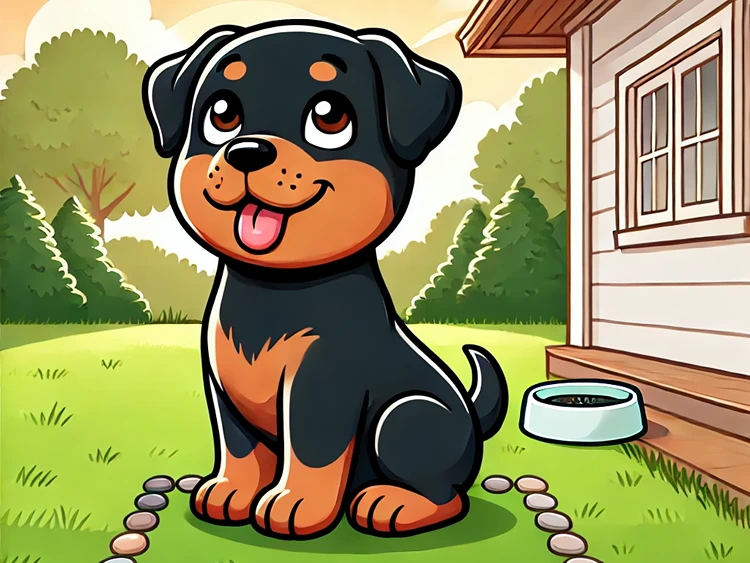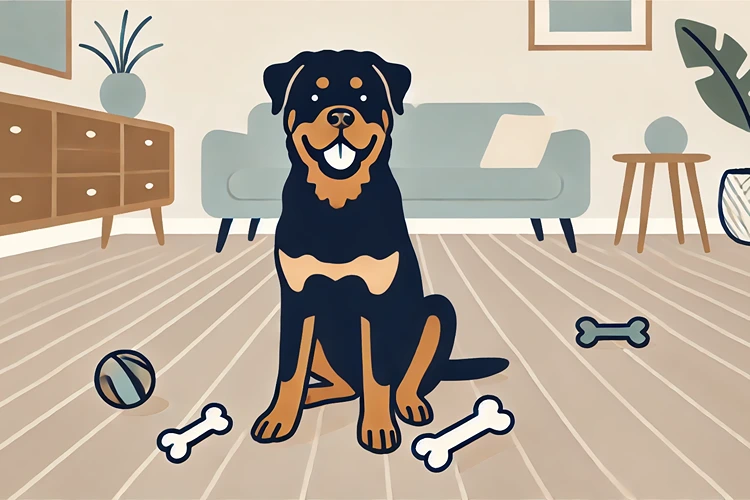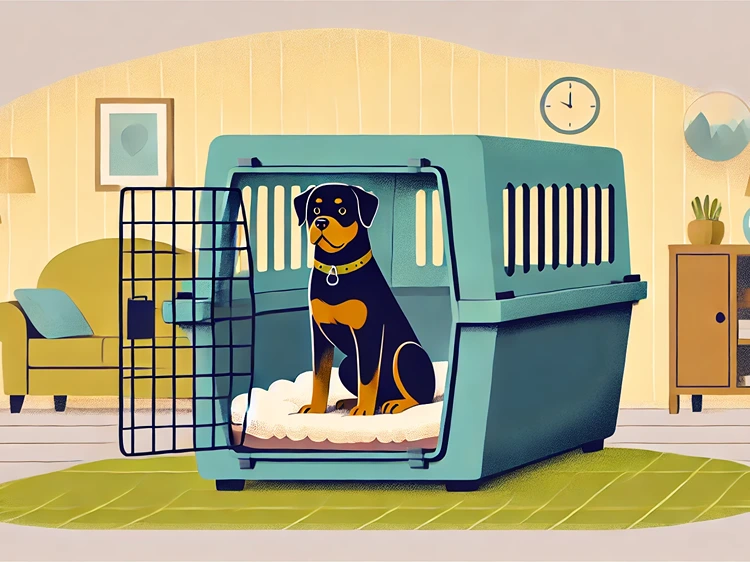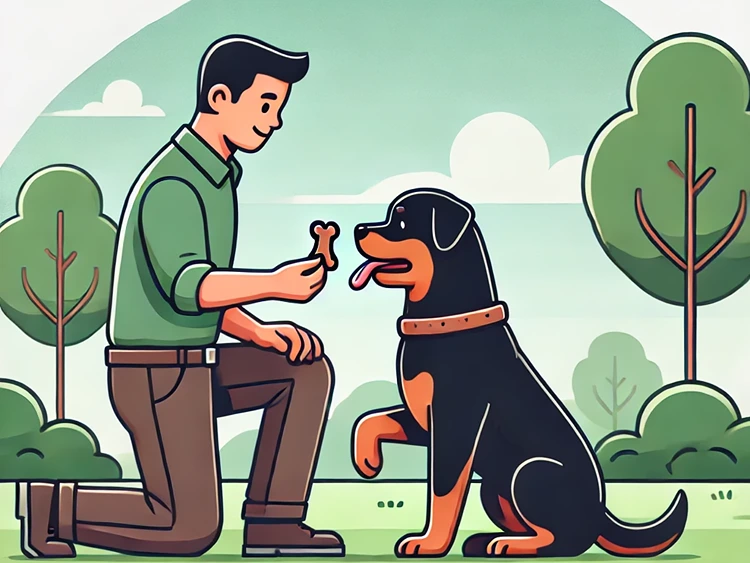Housebreaking your Rottweiler puppy is a crucial first step in ensuring a well-mannered and obedient dog. This process, also known as potty training, can be a challenge, but with the right approach, it’s entirely manageable. Whether you’re a first-time Rottweiler owner or an experienced handler, this guide will walk you through everything you need to know about housebreaking Rottweiler puppies.
Rottweilers are known for their intelligence and loyalty, making them quick learners. However, their strong-willed nature means they need clear guidance and consistency from the start. In this article, we’ll cover the essential steps to help you successfully housebreak your Rottweiler puppy, ensuring a stress-free experience for both you and your furry friend.
Why Housebreaking Rottweiler Puppies Is Important
Housebreaking is more than just teaching your puppy where to do their business; it’s about establishing a routine and setting boundaries. A well-housebroken Rottweiler puppy will know when and where it’s appropriate to relieve themselves, reducing accidents in the house and creating a cleaner, more harmonious living environment.
What Happens If You Don’t Housebreak Your Puppy?
Failing to housebreak your Rottweiler puppy can lead to a range of issues. These include constant accidents inside the house, which can be frustrating and unhygienic. Furthermore, it can lead to behavioral problems, as the lack of structure may cause confusion and anxiety in your puppy.
When Should You Start Housebreaking a Rottweiler Puppy?
The best time to start housebreaking your Rottweiler puppy is as soon as you bring them home, typically around 8 weeks of age. At this stage, puppies are highly impressionable and can quickly adapt to routines. The earlier you begin, the faster your puppy will learn the rules.
Can You Start Too Early?
While it’s important to start early, you also need to be patient. Very young puppies may not have full control over their bladder and bowels, so expecting perfect results immediately is unrealistic. Gradually increasing the expectations as your puppy matures will lead to better long-term results.
Setting Up a Housebreaking Routine
Establishing a routine is critical to successful housebreaking. Rottweilers thrive on structure, and having a consistent schedule will make the process smoother.
How Often Should You Take Your Puppy Out?
Puppies have small bladders and need to be taken out frequently. As a general rule, take your Rottweiler puppy out every 2 hours during the day, immediately after waking up, after meals, and before bedtime. As they grow older and gain better control, you can gradually extend the intervals between potty breaks.
Paw-some Tip:
Keep a journal of your puppy’s potty schedule for the first few weeks. This will help you identify patterns in their bathroom habits and adjust your routine accordingly.
Choosing the Right Spot for Potty Training
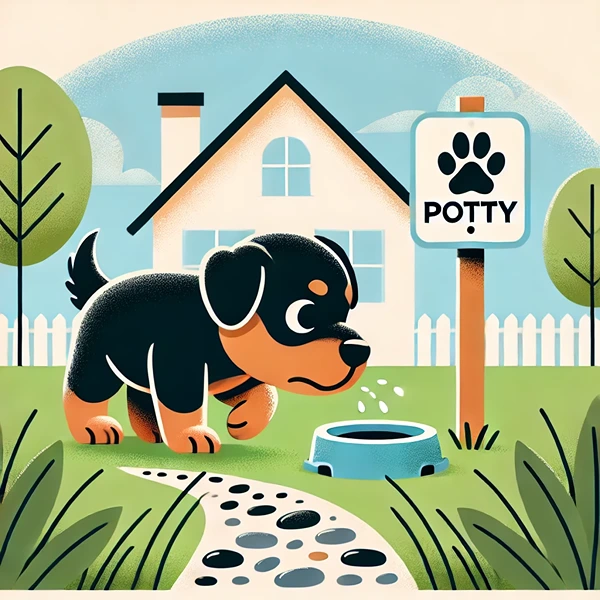
Location matters when it comes to potty training. Choose a designated spot outside where you want your puppy to do their business. Consistently taking your puppy to the same spot will reinforce the idea that this is where they should go.
Why Consistency Is Key
Consistency helps your Rottweiler puppy associate the chosen spot with bathroom time. Over time, they will start to understand that this area is their designated toilet, making the process more efficient and reducing the chances of accidents inside the house.
Using Crate Training as a Housebreaking Tool
Crate training can be a valuable tool in the housebreaking process. When used correctly, a crate becomes a safe space for your puppy, helping to prevent accidents when you’re not able to supervise them directly.
How Does Crate Training Work?
Dogs naturally avoid soiling their sleeping area, so by keeping your Rottweiler puppy in a crate when unsupervised, you encourage them to hold their bladder until they are let out. The key is to ensure the crate is the right size—large enough for your puppy to stand up and turn around, but not so big that they can relieve themselves in one corner and sleep in another.
Paw-some Tip:
Never use the crate as a form of punishment. It should always be a positive, comfortable space where your puppy feels safe.
Recognizing the Signs That Your Puppy Needs to Go
Understanding your puppy’s body language is crucial in preventing accidents. Most puppies give subtle signals when they need to go out.
What Are the Common Signs?
Common signs that your Rottweiler puppy needs to go include sniffing around, circling, whining, or suddenly becoming restless. If you notice these behaviors, take your puppy outside immediately.
What If You Miss the Signs?
Accidents will happen, especially in the early stages of housebreaking. If you miss the signs and your puppy has an accident inside, don’t punish them. Instead, calmly clean it up and reinforce the training by taking them outside as soon as possible.
Common Signs Your Rottweiler Puppy Needs to Go Out
| Sign | Description |
|---|---|
| Sniffing around | Your puppy starts sniffing the ground, often in circles, as they search for a spot to relieve themselves. |
| Circling | Walking in circles is a common indicator that your puppy is preparing to go to the bathroom. |
| Whining or barking | Your puppy may start whining or barking to get your attention when they need to go out. |
| Restlessness | Sudden restlessness or pacing can be a sign that your puppy needs to relieve themselves. |
Dealing with Accidents: What to Do When Your Puppy Has an Accident
Accidents are a natural part of the housebreaking process. How you handle them can impact your puppy’s progress.
Should You Scold Your Puppy?
Scolding your puppy after an accident can be counterproductive. Puppies live in the moment and won’t understand why they’re being punished after the fact. Instead, focus on positive reinforcement when they go in the right spot.
How to Properly Clean Up
Clean up accidents immediately using an enzyme cleaner. This type of cleaner breaks down the proteins in the urine or feces, eliminating the smell and preventing your puppy from being attracted to the same spot again.
Paw-some Tip:
Make sure to clean all accidents thoroughly, as any lingering odor might encourage your puppy to repeat the behavior in the same spot.
Positive Reinforcement: Rewarding Your Puppy for Good Behavior
Positive reinforcement is one of the most effective ways to housebreak your Rottweiler puppy. This involves rewarding your puppy every time they successfully go outside.
What Kind of Rewards Work Best?
Treats, praise, and playtime are all great ways to reward your puppy. The key is to reward them immediately after they go to the bathroom outside, so they make the connection between the behavior and the reward.
How Often Should You Reward Your Puppy?
In the beginning, reward your puppy every time they go outside. As they get better at housebreaking, you can gradually reduce the frequency of rewards.
What to Do If Housebreaking Isn’t Going as Planned
Housebreaking isn’t always a smooth journey, and it’s common to encounter setbacks along the way. Whether it’s due to a change in routine, stress, or simply a stubborn phase, understanding how to handle these setbacks is crucial to maintaining progress.
Why Do Setbacks Happen?
Setbacks can occur for several reasons. Your Rottweiler puppy might be experiencing a growth spurt that affects their bladder control, or they could be stressed by changes in their environment. Sometimes, a setback happens because the puppy is testing boundaries as they grow more confident.
How to Handle Setbacks
The key to overcoming setbacks is patience and consistency. If your puppy starts having accidents again, go back to the basics—reintroduce a stricter schedule, reinforce positive behaviors, and ensure they have plenty of opportunities to go outside. Avoid punishing your puppy, as this can create anxiety and make the situation worse.
Rottie Stats:
According to a study by the American Veterinary Medical Association, consistency in training methods increases the likelihood of successful housebreaking by up to 70%.
Socializing Your Rottweiler Puppy During Housebreaking
Housebreaking isn’t just about potty training; it’s also an opportunity to socialize your puppy. Taking your Rottweiler puppy outside frequently exposes them to new sights, sounds, and smells, which is crucial for their development.
How Socialization Affects Housebreaking
Socialization can actually aid in housebreaking. Puppies who are well-socialized are less likely to develop anxiety, which can lead to fewer accidents. Moreover, the more comfortable your puppy is with the outside world, the easier it will be for them to focus on their training.
When and How to Socialize
Start socializing your puppy early, taking them to different locations during their potty breaks. Introduce them to other people, animals, and various environments while ensuring they’re always safe and comfortable. Positive experiences during this time will help your Rottweiler puppy grow into a well-adjusted adult dog.
How Long Does It Take to Housebreak a Rottweiler Puppy?
Every puppy is different, and the time it takes to fully housebreak a Rottweiler puppy can vary. However, with consistency and the right approach, most Rottweiler puppies can be reliably housebroken within 4 to 6 months.
Factors That Influence the Timeline
Several factors can influence how quickly your Rottweiler puppy becomes housebroken, including their age, personality, and the consistency of your training. Younger puppies might take a bit longer as they develop bladder control, while older puppies may pick up the process more quickly.
What If It’s Taking Longer Than Expected?
If your Rottweiler puppy is taking longer to housebreak than expected, don’t worry. It’s important to stay patient and continue with your routine. Some puppies simply need more time, and rushing the process can lead to more setbacks.
Transitioning to Fewer Potty Breaks as Your Puppy Grows
As your Rottweiler puppy grows and gains more control over their bladder, you can gradually reduce the number of potty breaks. However, it’s essential to do this gradually to avoid accidents and confusion.
When to Start Reducing Potty Breaks
You can start reducing the frequency of potty breaks once your puppy consistently goes several hours without an accident. Begin by extending the intervals between breaks by 15 to 30 minutes and observe how your puppy handles the change.
How to Maintain Progress
Even as you reduce the number of potty breaks, continue to reinforce positive behavior. Praise and reward your puppy when they go outside, and maintain a consistent schedule. This will help solidify the training and ensure your Rottweiler puppy remains housebroken as they mature.
Common Housebreaking Myths Debunked
There’s a lot of advice out there about housebreaking, but not all of it is accurate. Let’s debunk some common myths to help you avoid mistakes during the process.
Myth 1: Rub Their Nose in It
One of the most outdated and ineffective methods is rubbing your puppy’s nose in their accident. This does nothing to teach them where they should go and can actually cause fear and anxiety. Positive reinforcement is a far more effective approach.
Myth 2: Crates Are Cruel
Some people believe that crate training is cruel, but when used correctly, a crate is a valuable tool that provides your puppy with a safe and secure space. It helps prevent accidents and supports the housebreaking process.
Myth 3: Punishment Works
Punishment after an accident is not only ineffective but can also harm your relationship with your puppy. Dogs respond best to positive reinforcement, so focus on rewarding good behavior rather than punishing mistakes.
FAQs
Wrapping Up
Housebreaking Rottweiler puppies is a rewarding journey that requires time, patience, and consistency. By establishing a routine, using positive reinforcement, and understanding your puppy’s needs, you can successfully train your Rottweiler to be a well-mannered member of your household. Remember, every puppy is unique, and setbacks are a normal part of the process. Stay committed to the training, and the results will be a cleaner home, a happier puppy, and a stronger bond between you and your Rottweiler. As you continue on this journey, keep in mind that the effort you put in now will pay off for years to come, leading to a well-behaved and loving companion. If you ever feel stuck, refer back to this guide for tips and reassurance, and always celebrate the small victories along the way.

